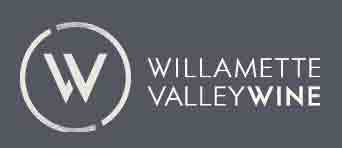WINE ORIGINS – LOCATION MATTERS
In wine, location is the key ingredient. Each bottle showcases an authentic characteristic of the soil, climate and temperature of the region, and the uniqueness of local growers and winemakers. When you pick a wine from Willamette Valley it means something to you. The words Willamette Valley represent more than a name. They denote a specific place where the wine was produced and the grapes were grown.
That’s why the Willamette Valley Wineries Association works diligently to preserve and protect the Willamette Valley name as well as the names of wine regions around the world. When the location of wine’s true place of origin is misused, consumers are misled and the sanctity of all quality wine regions is undermined. We proactively work with other quality wine regions that are concerned with their names being misused and want to eliminate consumer confusion.
Oregon’s wine labeling regulations, proposed by the industry and adopted by the Oregon Liquor Control Commission in 1977, continue to be the strictest wine labeling standards in the United States. If a wine label states Oregon, an Oregon county, or an AVA wholly within Oregon, 100% of the grapes must be from Oregon and 95% from that appellation of origin. When a specific grape is named on a label in Oregon, 90% or more of the wine must be from the named variety for more than 50 grape varieties, including Oregon’s most widely produced wines: Pinot noir, Pinot gris, Chardonnay and Pinot blanc. That’s compared with a 75% standard on the federal level.
In 2009, following in the footsteps of the Oregon Wine Board in 2005, the Willamette Valley Wineries Association joined the Declaration to Protect Wine Place & Origin. The Wine Origins alliance works collaboratively to ensure wine place names are protected and not abused or miscommunicated to consumers. WVWA is proud to join with Barossa, Bordeaux, Bourgogne/Chablis, British Columbia, Champagne, Chianti Classico, Jerez-Xérès-Sherry, Long Island, McLaren Vale, Napa Valley, Oregon, Paso Robles, Porto, Rioja, Santa Barbara County, Sonoma County, Texas, Tokaj, Victoria, Walla Walla Valley, Washington state, and Western Australia.
While we may be competitors in the global marketplace, we all agree that each region is unique and, as such, produces wines impossible to duplicate anywhere else. It’s really quite simple: location matters. We urge you to join us in looking carefully at all wine labels and ensuring that you know where your wines come from.
EU Registration Petition for GI Recognition and Protection of the Willamette Valley
We make wine in a very special place. We know it, and anyone regularly opening our wines knows it too. Wine well-made reflects the source, with features that are identifiable, time after time, as coming only from one place.
Knowing this to be true from the inception of this industry, Willamette Valley winemakers have sought to protect this place, both physically from damage by non-agricultural expansion into our logical AVA growing regions and in the marketplace from appropriation of our unique place-related names and brands by inauthentic players. This desire to protect the Willamette Valley and its uniqueness is seen in tight and transparent labelling laws that ensure the consumer gets what he or she expects in the bottle and that there is no confusion with other wine regions’ wines. From the beginning we knew that if we expect others to respect the uniqueness and special nature our names reflect, we have to respect their special places and names. Organizationally we have long supported work to protect wine place names worldwide, since initial discussions in 2002 and as founding members of the international Wine Origins group in 2005, with Oregon and WVWA signatories to the Napa Declaration.
This year we are taking another step towards international recognition and protection of the Willamette Valley, asking formal acceptance by the European Union of the Willamette Valley as a Geographic Indicator within their system. This would afford the same protections and recognition as wine regions within their boundaries.
The linked document, titled GUIDELINES FOR PROTECTED GEOGRAPHICAL INDICATION WILLAMETTE VALLEY (WILLAMETTE), is the core submittal document in which we attempt to summarize in a twenty-some page nutshell what the Willamette Valley is, its history, its uniqueness, what we do and why. We post it here for members of WVWA to review and comment on if they like (email Harry Peterson-Nedry with comments), realizing we can’t really hope to be complete and that these are only guidelines of who we are and what we hope to protect for the future. — Harry Peterson-Nedry, RR Wines
View and download the document here.
For more information, visit origins.wine or follow the coalition on Twitter and Facebook.


